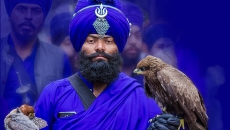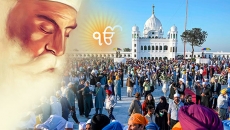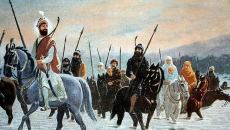With onset of the new year comes new definitions of love, especially in the information age and digital communication methods that are central to the 21st century.
In this era of forbidden love guarded by the restrictions of pandemic-driven mandates, COVID-19 isn’t the only thing in the air this February. Love may seem to be further than you’re used to, but closer than you think. With onset of the new year comes new definitions of love, especially in the information age and digital communication methods that are central to the 21st century.

Love can be a difficult concept to grasp and is a fluid phenomenon, with different people having differing views about it. Not just constrained to the idea of romance, love is omnipresent in many of our relationships. Be it the family ties that make us feel at home, the co-worker that makes the shift a little easier, or the touch of a newborn’s fingers – love comes in all shapes and sizes.
Love mayeven extend beyond those we know and into what we do. Our activities, passions, hobbies and job (for the lucky ones) are propelled by love. Most importantly, self-love is an idea that is so important.
If you love yourself, you open the doors to receiving more love in your life from others. Once you start to extend the idea of love beyond what is materialistically romanticized in the media we consume, you will begin to realize its full potential.
That said, with technology at the forefront of our social interactions, the expression of love has certainly changed. Cards have been replaced by social media posts, in-person meetings have been replaced by video calls and the delivery of a gift may be completely remote these days. With these changing measures, while the medium has changed, the message is the same. No matter how digital our means get, the feelings and emotions that drive our actions will carry the intended meaning.
While navigating your relationships and life choices, you may often find yourself wondering why you even need love. Let’s take Maslow’s Hierarchy of Needs to aid our understanding. After the physiological needs of water, shelter and food, humans need safety, which is depicted by employment, health, and personal security. Once these needs are met, love and belonging are essential to the growth of a human being. Intimate relationships, friends, family, and connection are a must-have before one can venture into developing esteem and self-actualization. This means that it’s not just in your head – love is an integral part of everyone’s lives and is, to a certain extent, a need before a want. As you maneuver through your search for love, in whichever form you choose, use the following as a guiding light to help clear your path.

Ask yourself:
What am I looking for?
It is important to distinguish if you are looking for a temporary escape, the resolution to a long-time quarrel, a sense of security, fulfillment, or an experimental phase to try out something new – maybe a relationship or a spontaneous trip to your favorite city.
Who do I want love from?
Love could be something you are seeking from others; this could be relationships you have at home or work, or a relationship you do not have yet, but would like to. Remember to also evaluate if the real person you want love from is yourself. Self-acceptance and self-respect are often prerequisites for relationships outside of yourself.
Why do I want this form of love?
Know the driving motivation behind your actions. If this is something you are being pressured into, do not paint a false picture of you wanting it as well. Recognize if your need for love is being produced from constant comparisons to others. If you are the sole driving factor, have an honest conversation with yourself about why you are in this phase.
When is the right time?
This is individual to you. If it feels like the right time, go for it. Do not follow a standard or arbitrary timeline set by society. Even if your intention is to open up more to your parents, respect your emotions and your body enough to proceed when it is most true to yourself, not by the convenience of others.
Where do my boundaries start and end?
Finding and developing love in your world can be exhausting and comes with no rule book. Listen to yourself in setting healthy checkpoints to see how you’re doing and when it’s time to take a break. With any sort of emotional investment, be firm on your walk-away point.
As you embark on this adventure, be kind to yourself and others. Love is always around us and pops up in places you least expect at times you’d never imagined. Often described as the medicine to every wound, love truly has life-changing properties. The world, as we know it, constantly changes and we inevitably have to accept these uncertainties. One thing that holds us together, internally and externally, is love – an unchanging, indestructible force!






